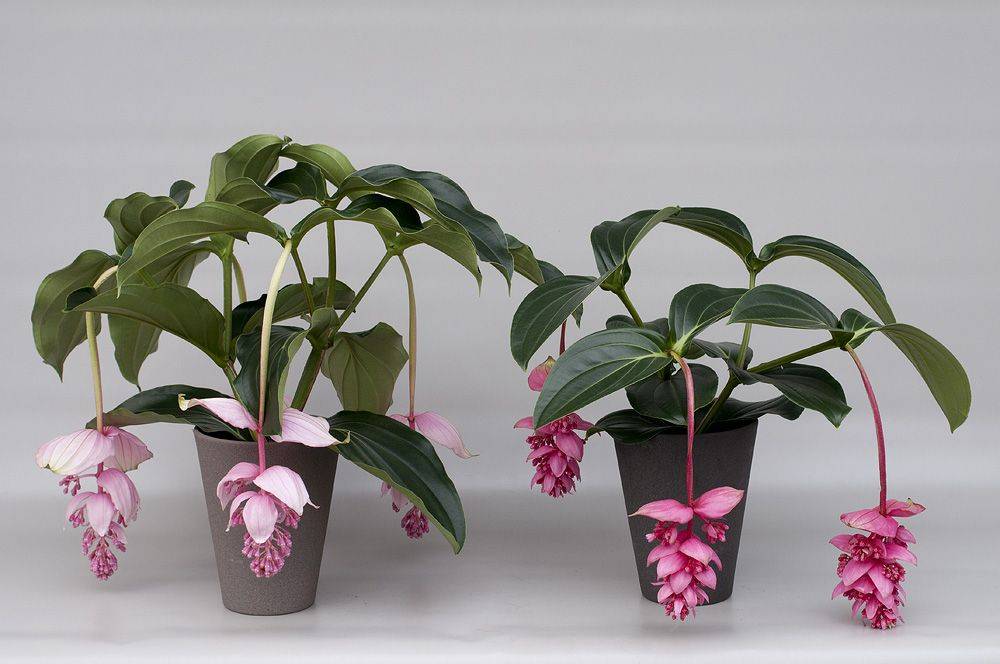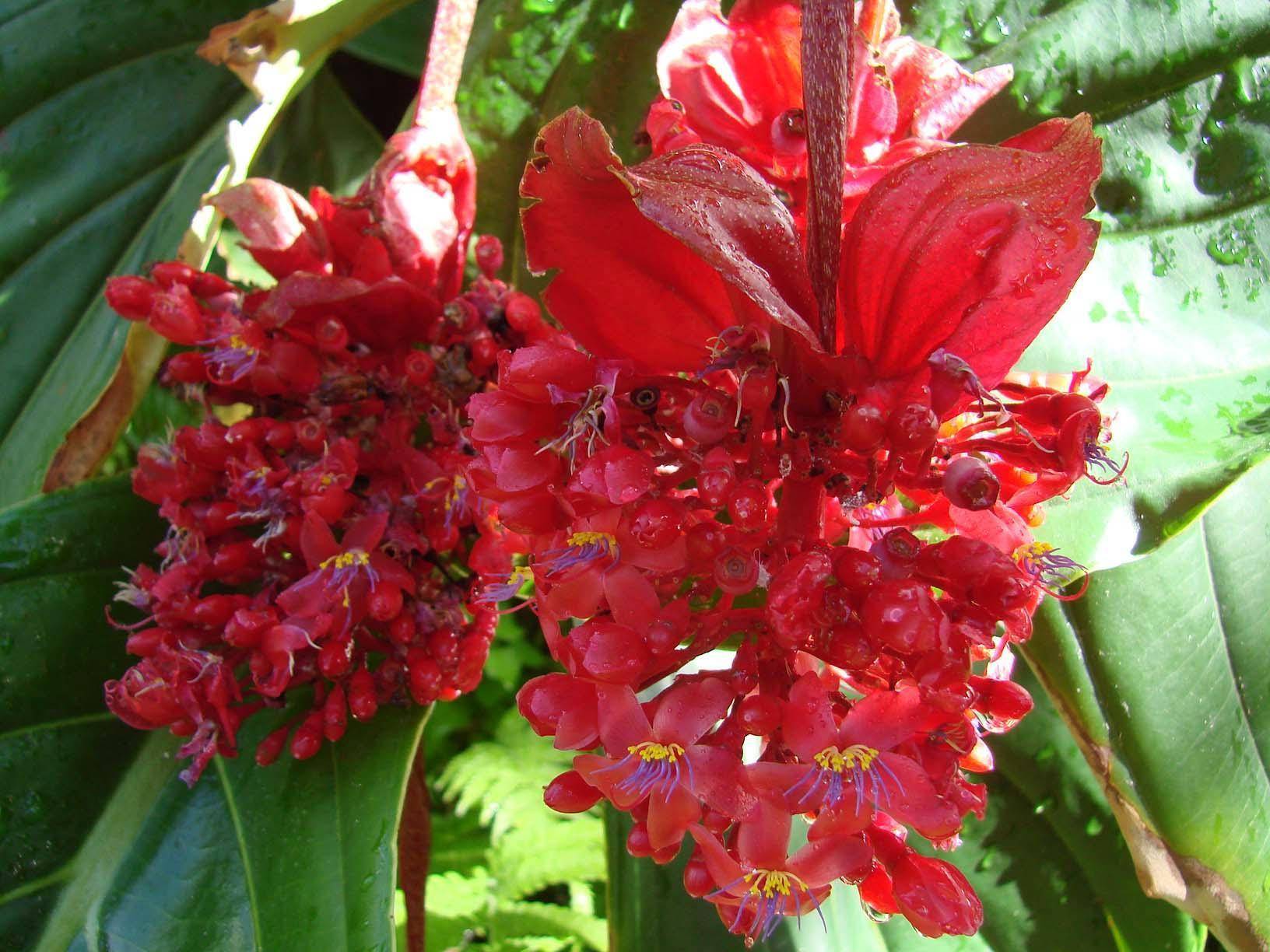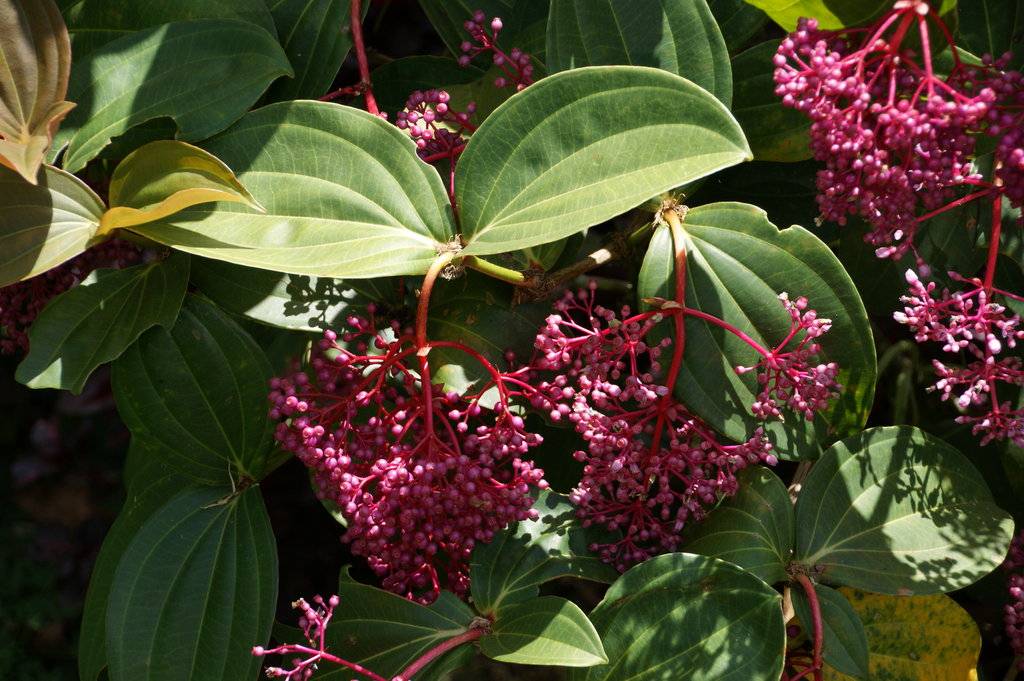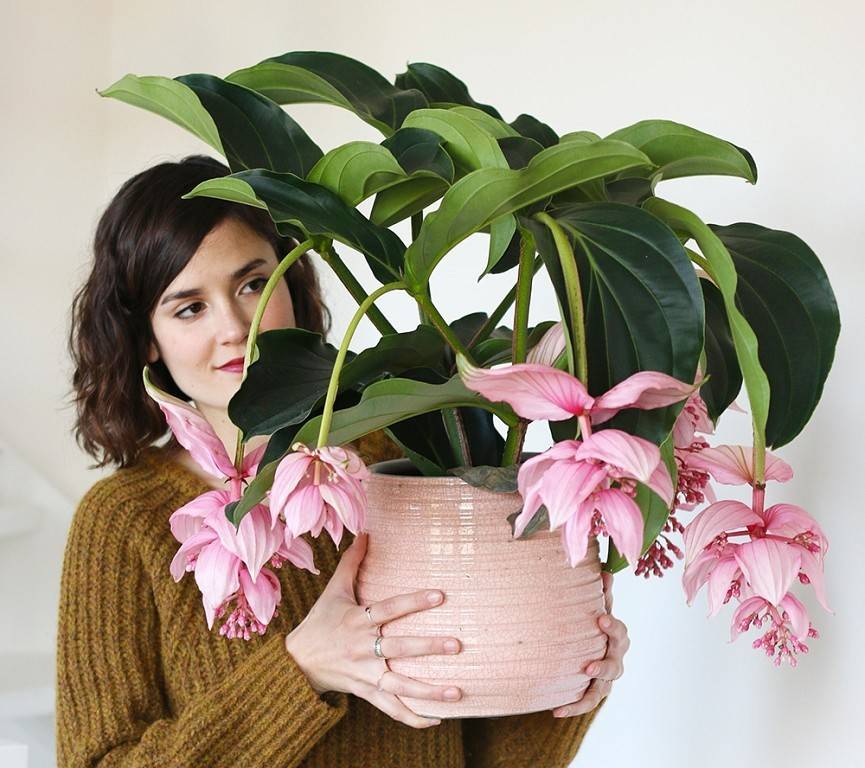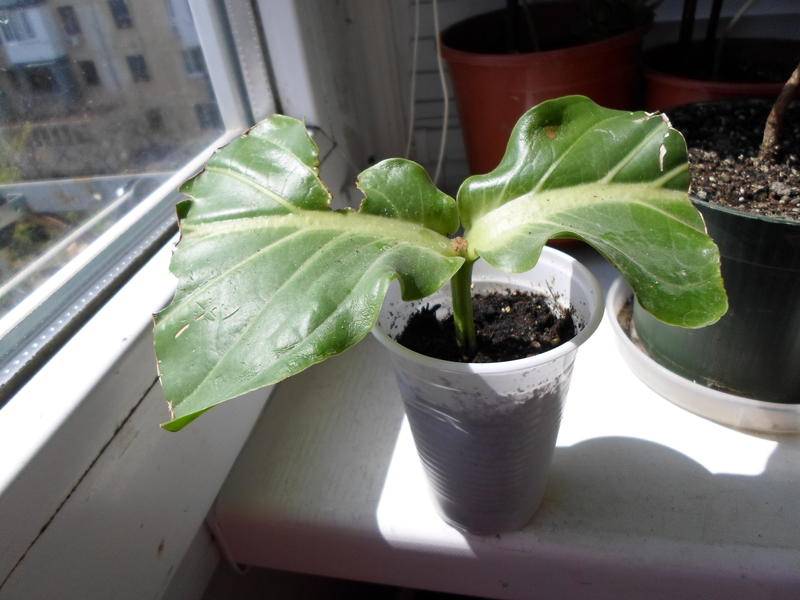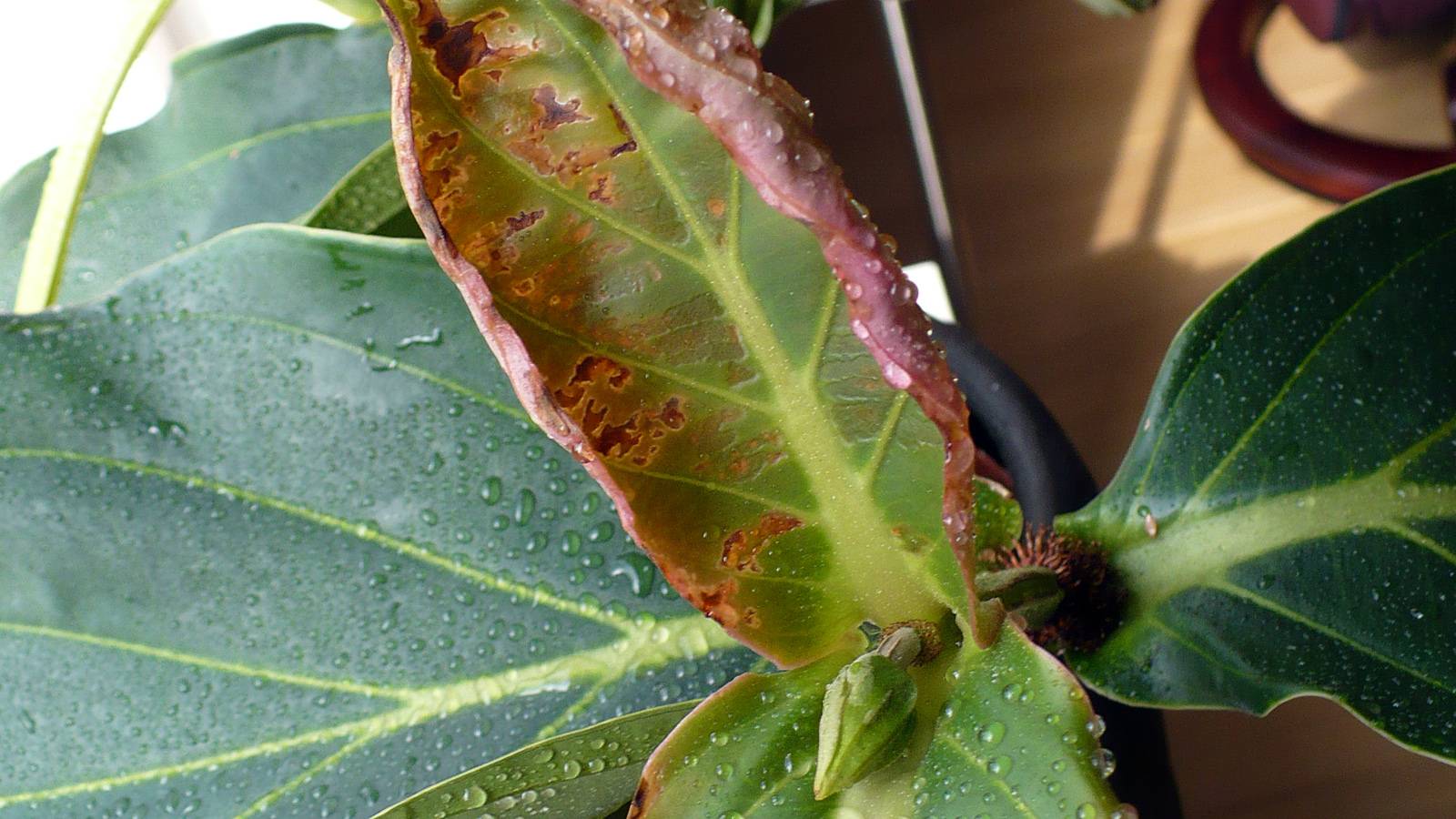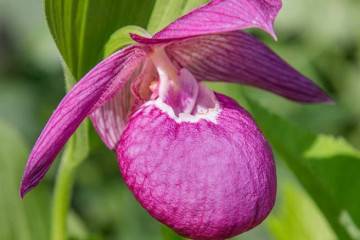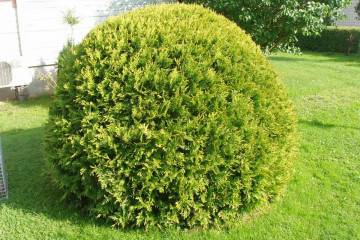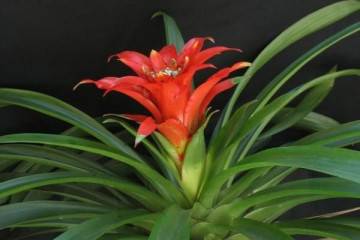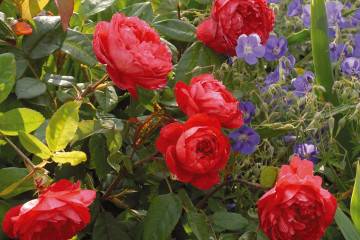Medinilla - what kind of flower, description
Content:
Medinilla is a plant that loves a tropical climate. But subject to the temperature regime, illumination and humidity, it can still be grown at home. The plant has an attractive appearance due to the unusual shape of the flower. It looks like a boat, and its length reaches 10 centimeters. A description of this unusual exotic is presented below.
The history of the origin of the flower
A common plant in Africa and Madagascar, but the Philippines is considered its homeland. Therefore, before growing a flower, he needs to provide the closest possible care at home.
The plant has over 100 varieties, some of which boast a height of up to 2 meters. Flowers belong to the Melastomov family. Leaves of various shapes and colors grow along the stem. But medinilla received the greatest popularity due to its unusual exotic flowering.
In order for the flower to grow healthy and delight with its flowering, it is necessary to observe the recommended temperature and humidity in the room. It is important to choose the right place in the house. Before purchasing a seedling or seeds, it is advisable to familiarize yourself with all the intricacies of growing. Only in this case it will be possible to create conditions that will lead to lush flowering. Otherwise, the owner of the plant will never see the unusual medinilla flower.
Varieties of indoor plants
Despite the fact that the flower has more than 100 representatives, only a few species have taken root at home, including: gorgeous medinilla, veined, cuming, javanica, sedum.
Medinilla is gorgeous
A wonderful plant that fully lives up to its name. It is also called medinilla magnifica.
The bush has large inflorescences, located together with large leaves on the shoots hanging down. If you look closely, it seems as if several small inflorescences are collected in one large flower, thus creating a unique exposition.
The flower has a light pink or coral tone and lasts about 3 months. Full development will require a warm and humid climate.
The following decorative varieties are distinguished:
- Trezor;
- medinilla Bella;
- Dolce Vita.
Veined
Its description is slightly different from the previous view. Large oval leaves with pronounced veins are attached along the stem of the plant. There are not so many inflorescences, they consist of several small flowers, mostly of a pastel shade.
In terms of the number of inflorescences, it is significantly inferior to other plant varieties.
Cuming
A group of plants whose leaves are shaped like hearts. They are slightly concave and the edges are raised.
The flower is popular for its interesting inflorescences - they are large and erect. In appearance, medinilla Cuminga resembles lilacs.
Gray-leaved
Unlike many varieties, it has shoots no more than 15 cm long. The leaves are rounded, 0.5 cm in diameter, with a barely noticeable vein in the center.
The flowers have a bright pink tone, long white threads emerge from their core.
Javanika
Unlike previous varieties, it is famous for its less capricious character. The plant is short, with leaves resembling the shape of an egg and clusters of inflorescences, painted in a bright purple hue. It quickly adapts to any humidity in the air.
Home plant care
Since Medinilla is quite capricious, it is necessary to take care of her correctly. Not every gardener will be able to create conditions as close to reality as possible. Indeed, for its development, it is necessary to adhere to a comfortable temperature regime and high air humidity.
Air temperature and illumination
The indoor medinilla flower does not like direct sunlight, so in the summer it must be removed from the windowsills. In winter, on the contrary, it is worth putting it closer to the window, and preferably from the south side. The plant prefers a more bright diffused color.
As for the temperature regime, throughout the year it should be kept within +20 .. + 25 degrees. In winter, a decrease is allowed, but not more than up to +16 degrees.
Air humidity and watering rules
Medinilla - a flower that loves high humidity - should be around 75%. It is necessary to regularly spray the plant with clean water, and in winter, gardeners recommend installing air humidifiers, because due to the work of heating elements, the air becomes dry, which the plant does not like at all.
Watering the flower, especially at the end of winter, should be constant, because it is at this time that flower buds begin to form. When the plant is already in bloom, watering is carried out less frequently, and by the beginning of the winter season it is significantly limited.
Soil composition and feeding
Since medinilla can even grow on the bark of trees, then, as far as the soil is concerned, here it is not capricious. According to gardeners, the soil should consist of sod and leafy soil, sand, peat and humus. In order not to search for each individual component, you can purchase a ready-made mixture in flower shops.
In order for medinilla magnifica to please with its flowering, home care for it will require regular feeding. In the summer, it is necessary to fertilize the plant once every 20-30 days, but not more than three times during the entire season, but from autumn to spring this is not necessary.
Flower container size
Since the root system of a flower is not as well developed as that of many other plants, it is impractical to plant it in a deep pot.
It is recommended to plant the plant in a shallow but wide pot, which can then be hung in a basket so that the leaves and flowers fall down beautifully.
Pruning and replanting
It is necessary to transplant the plant before flowers begin to form. During the procedure, the roots are freed from the old earthen coma, they are carefully examined - bad or rotten areas are removed. Adult medinilla is transplanted no more often than once every 3 years.
After the flowers have completely bloomed, they must be cut off. Moreover, with a small amount of escape, which will only stimulate the appearance of lateral processes.
Features of flowering plants
The plant begins to wake up in the last month of winter, in February. At this time, new beautiful leaves grow, but flower stalks appear in spring, in April.The period between the appearance of the buds and their full disclosure is not small - it lasts more than a month. The flowering itself is the same in duration.
After the flower has completely bloomed, it must be cut. This only stimulates the further emergence of new inflorescences.
Types and shape of flowers
When the plant is still young, the branches are flexible, but they become harder with age. The leaves are green, large, with pronounced or weakly expressed venation, and can be elliptical or broadly lanceolate in shape.
The flowers themselves are striking in their beauty and are collected in large clusters hanging from the pot. If you look closely, the bunches contain many small flowers of various shapes, consisting of 4-5 petals. They can be light pink, pink, and rose red.
Flower breeding options
There are two ways to reproduce a flower:
- seeds;
- cuttings.
Medinilla seeds can either be harvested from an existing plant at home, or purchased at a flower shop. It is necessary to sow them from February to March in a small container filled with a substrate from a mixture of sand and turf.
In order for the seeds to germinate well, you need to keep them warm, and it is best to build a mini greenhouse. With the emergence of sprouts, they are dived and transplanted into different pots.
The second method of reproduction is by cuttings (can be carried out from January to May). To do this, a stalk with 3 buds is cut off, planted in the prepared substrate and covered with a jar on top, thus creating greenhouse conditions. The first roots will appear only after 5 weeks, after which they can be transplanted into a pot, like an adult plant.
Plant diseases and the appearance of possible pests
Medinilla is magnificent - a flower that is resistant to external stimuli, but if watered, the plant can often suffer from rotting of the root system, and in case of drought - from worms.
You can identify problems with the plant by the following changes:
- light spots on the leaves - too much sunlight hits the plant directly;
- premature falling of buds or flowers - drafts in the room or constant change of place;
- no flowering - there was no dormant period;
- the appearance of brown spots - affected by the scabbard (spray the leaves with a special solution against insects);
- leaves curl up into a tube - insufficient air humidity;
- black spots on the leaves and stems - the appearance of rot (in this case, it is necessary to completely replace the soil, and treat the flower with a fungicide).
The medinilla flower will conquer any gardener with its majesty, long flowering and variety of species. For those who can create appropriate living conditions for the plant, they will receive a real exotic unique flower in their home.
